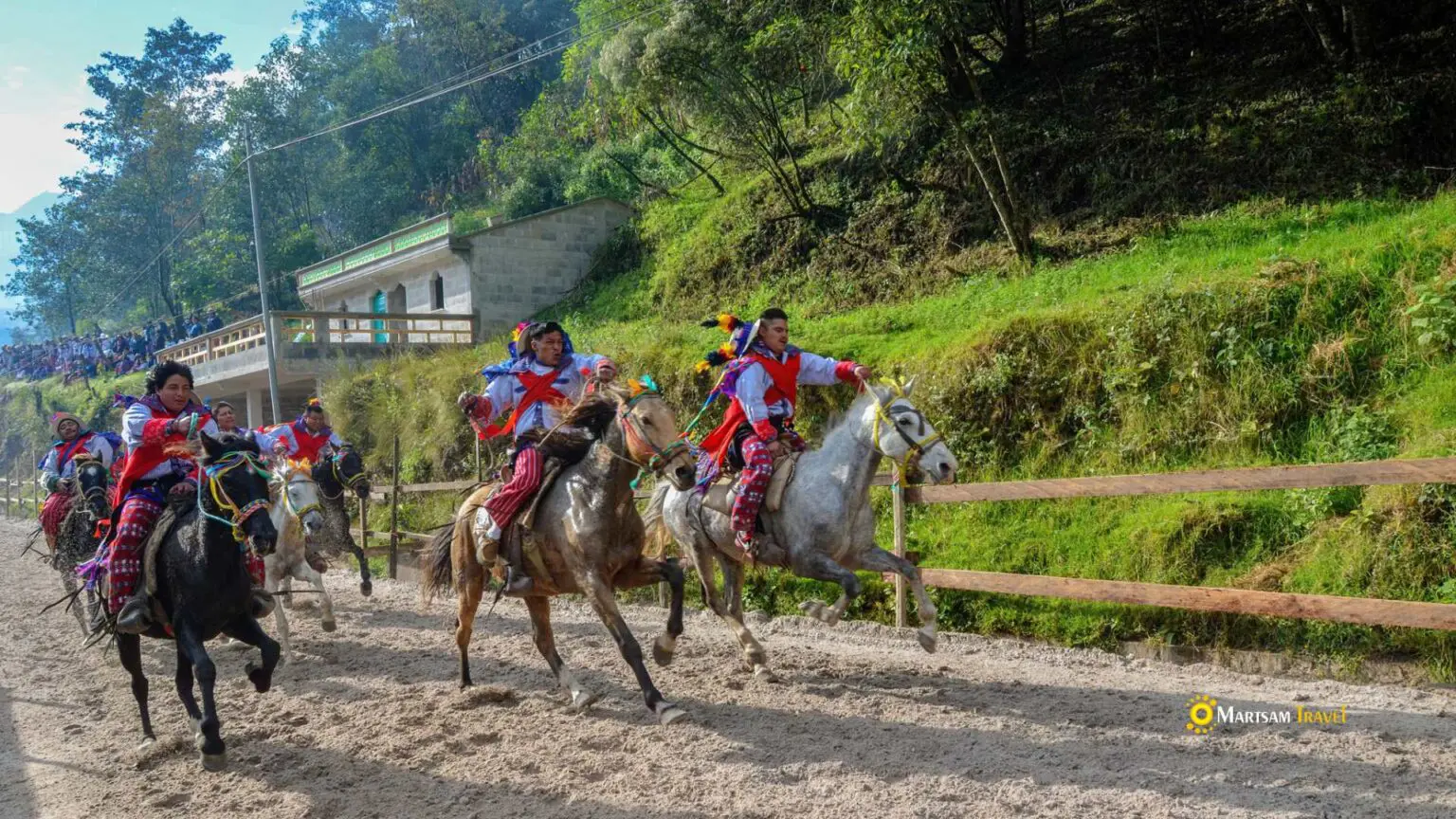All Saints Day in Guatemala: Festival Tours and Cultural Adventures
Dive into the Rich Traditions and Flavors of the Traditional Guatemalan Feast on All Saints Day
Guatemala celebrates All Saints Day with a blend of rich traditions, flavors, and cultural customs. This festive occasion lets you uncover the feast’s origins and evolution and witness the intricate preparations and altars for this special day. Beyond the visual spectacle, All Saints Day tempts the palate with culinary highlights. Guatemalan cuisine, with its diverse flavors and unique cooking techniques, shines in the feast’s traditional dishes. Join our cultural adventure to discover the captivating traditions and delectable flavors of All Saints Day in Guatemala.
Origins and Evolution of All Saints Day in Guatemala
Guatemala’s Historical Roots of All Saints Day
Indigenous Mayan traditions form the foundation of All Saints Day celebrations in Guatemala. The Mayans, before Catholicism’s arrival, revered their deceased ancestors and sought their wisdom. The introduction of Catholicism during Spanish colonization blended with these indigenous beliefs, creating a unique set of customs.
How the Feast Has Evolved Over Time
All Saints Day in Guatemala has seen changes and adaptations over the years, reflecting shifting cultural influences. While its core lies in Catholicism, people have introduced modern touches to the celebration. For instance, many now decorate traditional altars with photographs, personal items, and the departed’s favorite foods. This mix of tradition and personal touch gives the feast a dynamic, evolving character.
Culinary Highlights and Unique Cooking Techniques
Savor the Diverse Flavors of Guatemalan Cuisine
Guatemalan cuisine, a mix of indigenous Mayan tastes, Spanish elements, and local produce, comes alive during All Saints Day. The feast highlights traditional dishes like tamales and fiambre, each narrating a tale and offering a unique flavor profile. Ingredients such as corn, beans, chilies, tomatoes, and spices enrich Guatemalan dishes. Every morsel, whether a rich tamale or a refreshing vegetable bite, offers a glimpse into Guatemala’s culinary legacy.
Mastering Traditional Cooking Techniques for the Feast
Generations have handed down the cooking techniques that shape the All Saints Day feast. These methods produce delectable dishes and help keep the cultural heritage alive. For instance, chefs use nixtamalization to prepare masa dough for tortillas and tamales by soaking corn in an alkaline solution. They also favor slow cooking over open flames or in clay pots, known as ollas de barro, to bring out the best flavors and aromas.
Exploring the flavors and techniques of Guatemalan cuisine during All Saints Day enriches our understanding of the celebration’s significance. Recognizing the historical roots and evolution of All Saints Day in Guatemala deepens our appreciation for this vibrant tradition.

Regional Variations and Cultural Customs
Diverse regional traditions of All Saints Day
All Saints Day in Guatemala is celebrated with diverse customs and practices that vary across the country’s regions. Each region has unique ways of honoring the departed and celebrating this special occasion. In some areas, families gather at cemeteries to clean and decorate the graves of their loved ones, while in others, they create intricate altars at home adorned with flowers, candles, and photographs. The food offerings differ from region to region, with specific dishes and ingredients favored in certain areas.
Cultural and religious customs associated with the feast
Community and family are central to the cultural customs associated with All Saints Day. It is a time to gather, share stories about those who have passed away, and strengthen bonds between generations. The feast serves as a reminder of the importance of family ties and community support during joyous celebration and solemn remembrance.
By delving into the regional variations and cultural customs associated with All Saints Day in Guatemala, we gain a deeper understanding of the significance behind this vibrant celebration.

Experiencing the Traditional Guatemalan Feast on All Saints Day
Best places to experience the feast
To truly immerse yourself in the vibrant celebration of All Saints Day in Guatemala, several top locations offer an unforgettable experience. One such place is Santiago Sacatepéquez, where you can witness the renowned Giant Kite Festival. This colorful event showcases enormous kites adorned with intricate designs and messages for the departed. The atmosphere is filled with music, food stalls, and a sense of community as families come together to celebrate.
For a more intimate experience, consider visiting smaller towns and villages such as Todos Santos Cuchumatán or Santiago Atitlan. These communities have preserved their traditional customs and offer a glimpse into the authentic celebrations of All Saints Day. You can participate in processions, visit local cemeteries adorned with flowers, and share communal meals for this special occasion.
Must-try traditional drinks and beverages
Every feast is complete with indulging in traditional drinks and beverages that complement the flavors of Guatemalan cuisine during All Saints Day. One must-try beverage is Atol de elote, a creamy corn-based drink flavored with cinnamon and sweetened with panela or brown sugar. It’s warm, comforting, and perfect for sipping during cool November evenings.
Another popular choice is horchata de arroz, a refreshing rice-based drink infused with cinnamon and vanilla. It’s served chilled over ice and provides a delightful balance to the rich flavors of Guatemalan dishes. Try chicha, made from fermented maize, if you want something more spiritual.
Exploring these best places to experience the feast and trying traditional drinks and beverages associated with All Saints Day in Guatemala will satisfy your taste buds and create lasting memories of this vibrant celebration.
Embrace the Vibrant Traditions and Flavors of All Saints Day in Guatemala
All Saints Day in Guatemala is a celebration that invites you to immerse yourself in the rich cultural heritage and significance of this vibrant feast. There is so much to discover, from exploring the origins and evolution of the celebration to experiencing the diverse regional traditions and customs. Indulge in the delicious flavors and culinary delights of Guatemalan cuisine, with its unique ingredients and traditional cooking techniques. But beyond the food, All Saints Day is a time to experience the warmth and community spirit surrounding this special occasion. It’s an opportunity to connect with others, honor loved ones who have passed away, and embrace the traditions that make Guatemala’s All Saints Day unforgettable.


